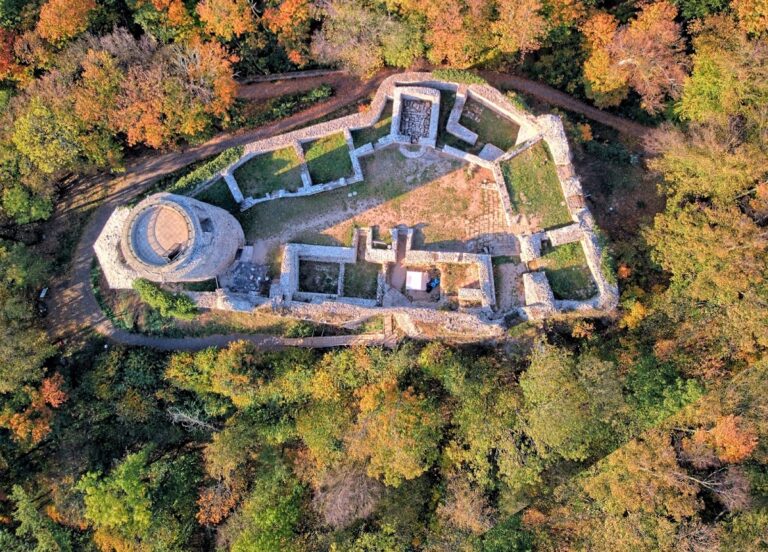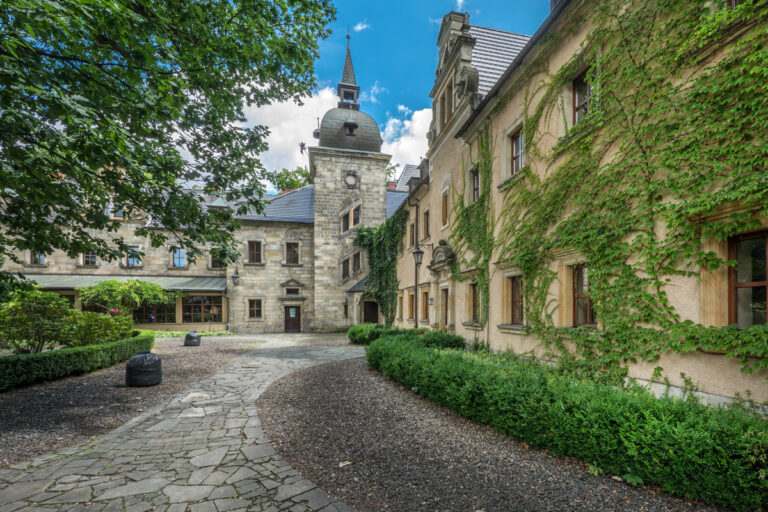Podskale Castle: A Medieval Fortress in Lower Silesia, Poland
Visitor Information
Google Rating: 4.1
Popularity: Low
Google Maps: View on Google Maps
Official Website: fotopolska.eu
Country: Poland
Civilization: Unclassified
Remains: Military
History
Podskale Castle, located in the village of Rząsiny in present-day Poland, was established within the historical region of Lower Silesia. Its origins connect to the medieval civilization that controlled this territory, reflecting the region’s complex political and military background.
While tradition attributes the castle’s founding to Duke Henry the Bearded of the Piast dynasty around the early 13th century, no direct sources or archaeological evidence confirm construction at that time. The first clear written record appears in 1367, when the castle is noted as the property of brothers Reintsch and Nickel von Talkenberg, members of a noble family that likely established or acquired the stronghold during the 14th century. Nickel von Talkenberg is specifically mentioned as the sole owner between 1385 and 1387, indicating established noble control during this period.
Toward the end of the 15th century, Podskale Castle gained notoriety as the base of Bernhard von Talkenstein, identified as a robber knight. Bernhard’s attacks on merchants and citizens from the nearby city of Wrocław provoked a decisive response from King Matthias Corvinus, who governed Silesia beginning in 1469. Responding to this lawlessness, royal forces under Georg von Stein carried out a military operation in 1476 to capture and destroy the fortress. This action involved undermining the castle’s defenses—excavating tunnels beneath walls to weaken them—and the use of explosives to bring about its ruin.
After this destruction, the castle was not rebuilt. Throughout the following centuries, ownership of the village and the ruins passed through several noble families, including the von Lest, von Poser, and von Schmettau clans. In the 19th century, Hans Karl von Diebitsch-Sabalkanski took measures in 1830 to safeguard the remnants. The final private owner before the upheavals of World War II was a person named Hintz from Winckel. Following the war, the site was transferred to state ownership under Poland’s administration.
Podskale Castle’s history reflects its role in the volatile medieval environment of border defense and regional conflict. Its downfall was connected to the suppression of feudal violence during a period marked by struggles between knights and urban centers.
Remains
Set upon the naturally rugged Talkenstein rock formation, Podskale Castle adapted its plan to the narrow, elongated summit, roughly 25 meters high and about 100 paces long. The site’s layout comprises two main sections: an upper castle atop the summit and a lower castle situated on the gentler western slope, which originally served as the entrance point.
The upper castle rests on a plateau about seven meters wide, constrained by the steep drops that surround the rock on three sides. Here, visitors can still see portions of a defensive wall constructed from rubble stone. This wall includes arrow slits—narrow vertical openings designed for archers—demonstrating the fortress’s protective measures. Close to these surviving defenses are fragments believed to belong to a residential building, indicating where inhabitants once lived or conducted daily affairs.
Below, the lower castle preserves parts of a vaulted cellar, a storage space characterized by an arched stone ceiling that provided strength and fire resistance. The entire masonry throughout the site was built using roughly shaped stones cemented together, a typical medieval method that blended with the natural rock environment.
Over time, the ruins suffered reductions in their fabric, notably when stones were removed in 1818 to aid in the construction of nearby roads. Today, the remains appear partially preserved, with some wall sections and underground chambers still visible amid the scattered stonework. The two-part arrangement of the fortress clearly reflects how builders shaped the complex to fit the irregular terrain of the Talkenstein.
These preserved elements offer a glimpse into the castle’s medieval defensive functions and living quarters, grounded in practical construction techniques tailored to a challenging rocky outcrop.










